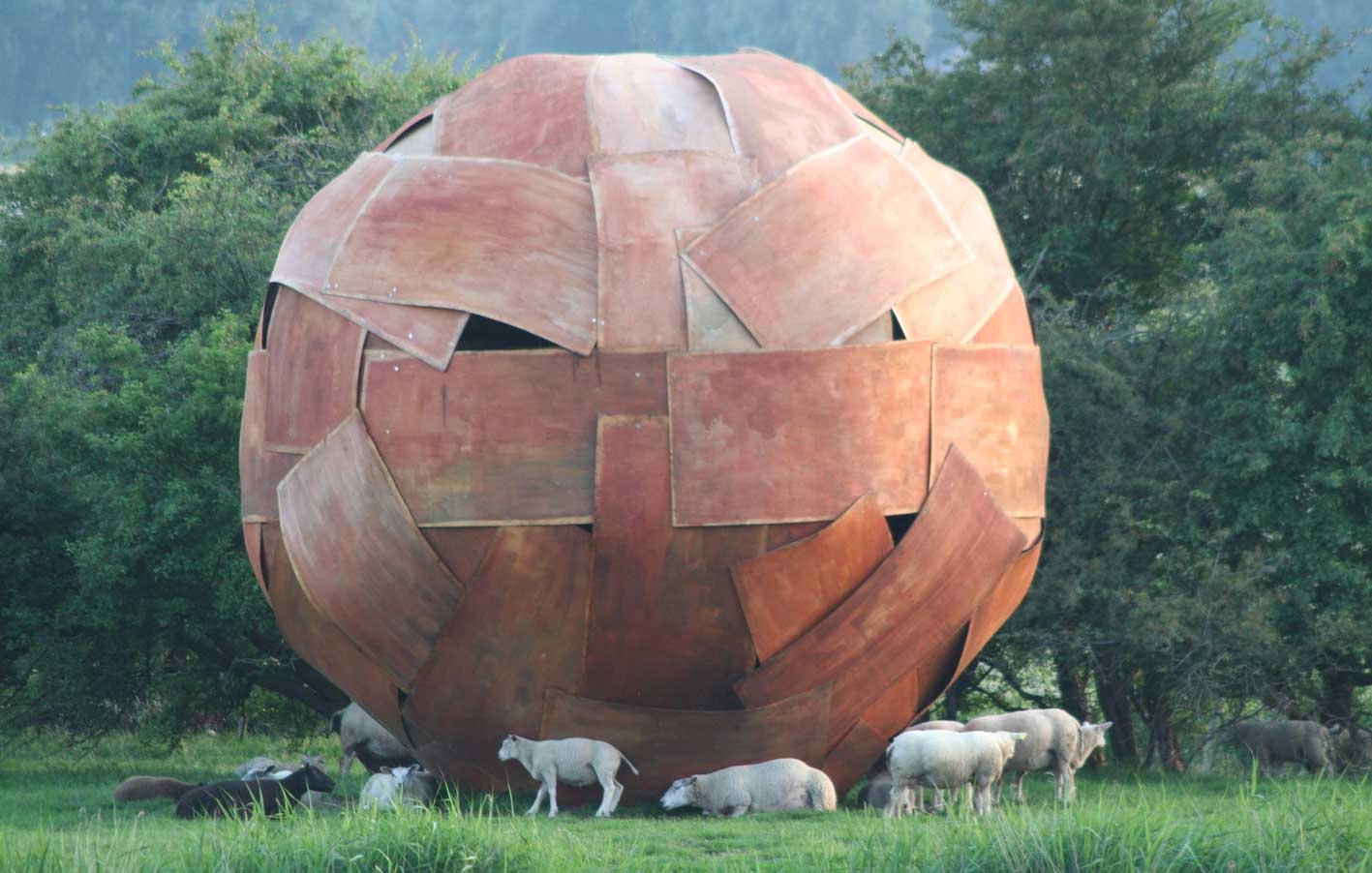Folly and Landscape, the first exhibition in Scotland by Andy Holden, reflects strands of his practice through recent and new works. The central part of the exhibition focuses on Rockall, a small islet in the North Atlantic that some consider the most remote rock in any of the oceans of the world. As Holden’s exhibition makes clear, this remoteness does not make the rock devoid of information. Bastion of Empire/ Heap of Language/An Exercise in Simultaneity (2013), for example, overlays recorded readings about aspects of Rockall’s geological, political and biological characteristics. As with Robert Smithson’s A Heap of Language (1966) – albeit through cacophonous audio rather than writing – this work makes language impenetrable through accretion.
‘Lack of communicability’ mixes with the knowledge that only a few adventurous people have ever landed on Rockall and evokes Walter Benjamin’s reflections on the decline of storytelling in his ‘The Storyteller’ (1936): ‘The intelligence that came from afar – whether the spatial kind from foreign countries or the temporal kind of tradition – possessed an authority which gave it validity, even when it was not subject to verification. Information, however, lays claim to prompt verifiability.’ Although I don’t see Holden as a storyteller as such, there is a romantic strand to his work that alludes, in an era of rapid access to information, to ‘intelligence from afar’. Layered coloured plaster sculptures, Slices (2013) and the colourful Bastion of Empire paintings (2012) are also included in the Rockall ‘section’. Reading the paintings as commentary on the multiple international claims on the islet would render them as twee as their genre, but reading them as allusions to ‘intelligence from afar’ sees them hold out for something more ethereal and resistant to closure.
Studies for Boulder in Landscape (2009–12) is a series of kitsch landscape paintings with the buoyant, giant ‘boulders’ painted in. Hung so as to face out into the street, they play against commercial galleries selling populist images: they are whimsical but little more. Boulder Films (2008–11), on the other hand, do succeed in doing more to ignite Holden’s original sculptural work, large, relatively rough-hewn wooden orbs planted in some innocuous rural or urban setting. The films, shot with a handheld camera, feature shaky car drives out to the ‘boulders’, the background roar of wind, enthusiastic zooms and occasional scenes of people having fires or raving in the street in front of the somewhat incongruous objects. The pacing is slow in places and there is occasional musical accompaniment leading to more reflective engagement. And this conspires to give the work time to grow in the imagination, to take on a kind of mythical, distant weight. With this you catch sight of an interesting thread. But Folly and Landscape (which also includes a lecture by the artist with his father, renowned ornithologist Peter Holden, about nestmaking) ultimately presents too many avenues that don’t quite come together.
This article was first published in the April 2013 issue.
